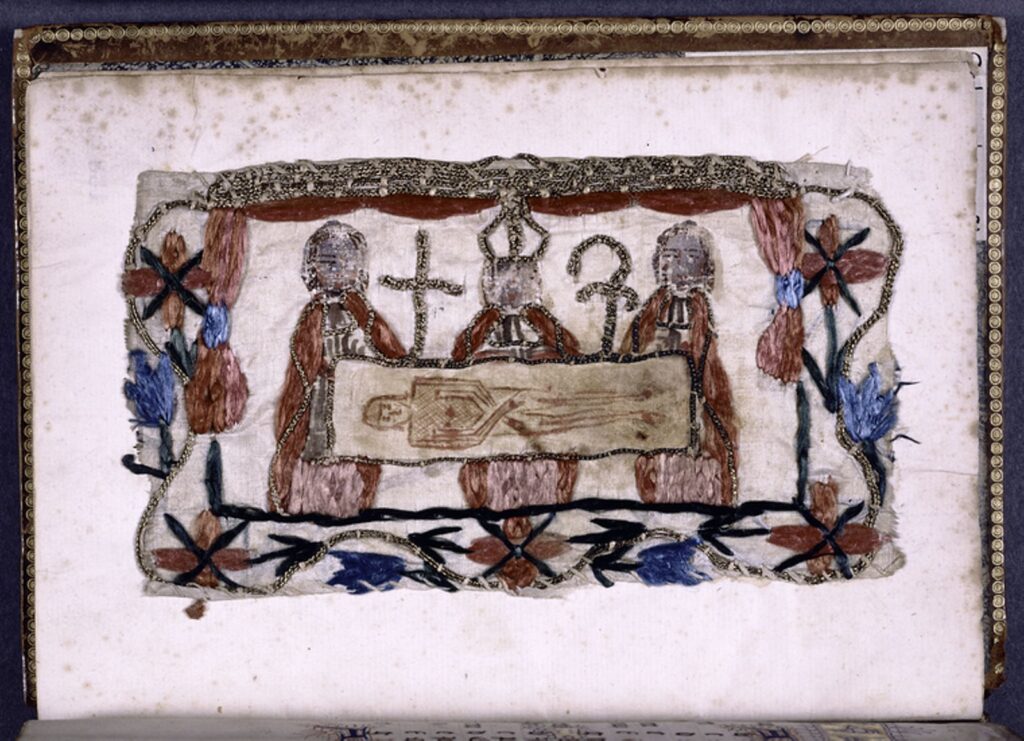
Overview
During the medieval and renaissance periods, embroidery evolved significantly. The Medieval period reflected the changing social and religious landscape of Europe while the renaissance period reflected the era’s emphasis on artistry and luxury.
Key Periods
- Medieval (500 AD – 1500 AD)| Medieval embroidery was deeply intertwined with the Church, showing its profound influence on medieval European society.
- Production: Many of the most intricate examples of medieval church embroidery were produced in monastic workshops. Monks and nuns often embroidered as a part of their religious duties. The period saw the introduction of elaborate techniques like goldwork, where threads of gold were used to create luxurious patterns, and needlepoint, which allowed for detailed needlework on various fabrics.
- Garments: Embroidery was used extensively in liturgical garments such as altar cloths, chasubles (outer-wear worn by priests during Mass), stoles, orphreys (decorative bands or panels on garments) and other liturgical-wear. Embroidery was also used in church linens and altarpieces which were often very ornate.
- Details of Ornamentation: Many of these items featured Christian symbols such as the Cross or the Chi-Rho (a monogram for Christ), or people like the virgin Mary and various saints. Another popular motif was scenes from the Bible, like the Crucifixion, the Nativity, the Last Supper and scenes from Christ’s life.



- Renaissance (14th to 17th centuries) | The term “Renaissance” comes from the French word for “rebirth” (from the Latin “renascentia”), reflecting the period’s revival of classical learning. Starting in Italy and spreading throughout Europe, the Renaissance was marked by a renewed interest in the art, literature, and philosophy of ancient Greece and Rome which had its influence on embroidery.
- Usage: Embroidered garments were often commissioned by nobility and royalty, reflecting the status and wealth of European courts. The art form was showcased in portraits and religious artworks, often illustrating the fine detailing and craftsmanship involved.
- Subjects: This period saw more intricate and naturalistic designs. Embroidery featured elaborate patterns including floral motifs, mythological themes, and intricate borders. The depiction of nature and the use of realistic textures became common.
- Techniques & Materials: Techniques such as punto in aria (stitching on a lace-like net foundation) and goldwork (using metallic threads) were prominent. Embroidery was often used to embellish clothing, furniture, and tapestries. The use of luxurious materials like gold and silver threads, pearls, and precious stones was widespread.



Highlight
Medieval and Renaissance embroidery showcased advancements in art and craftsmanship. Many embroidered pieces from these eras are preserved in museums and collections, providing great insight into the embroidery of the period.